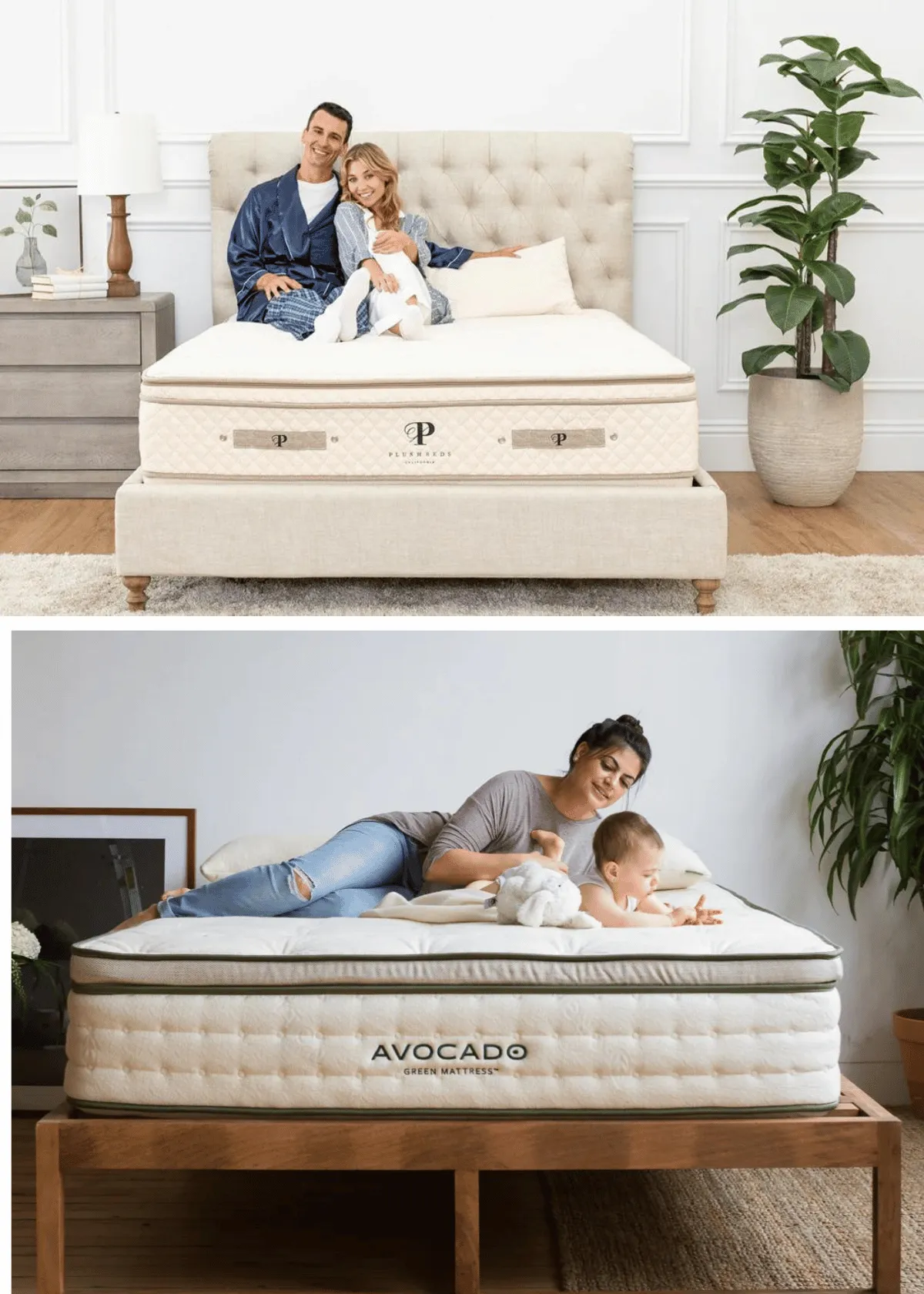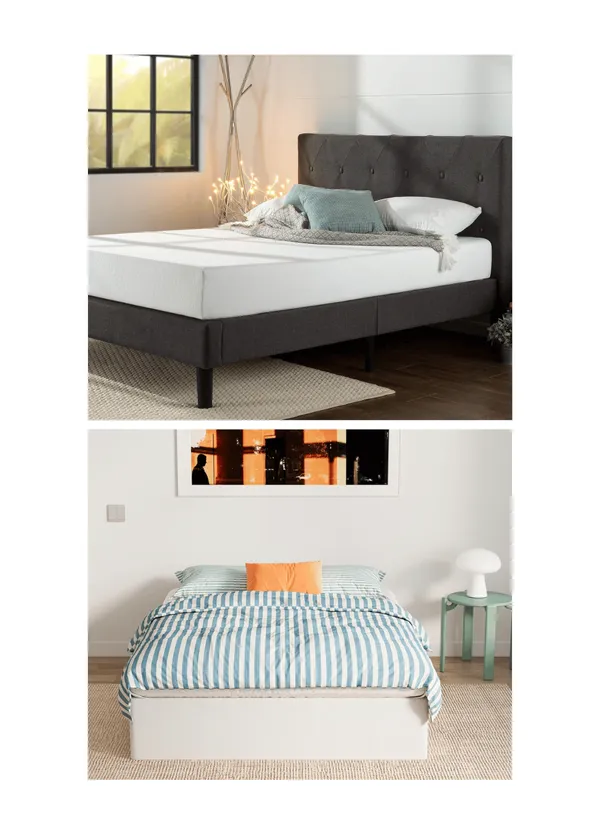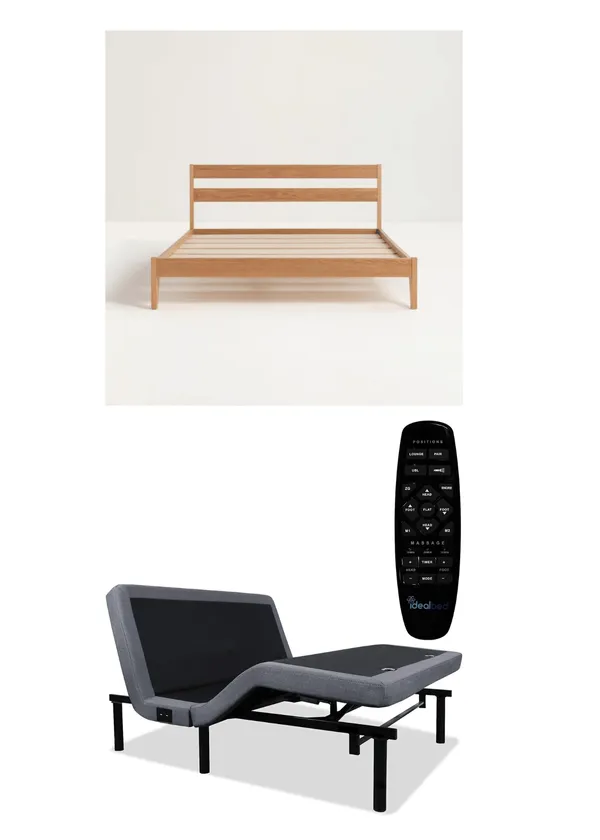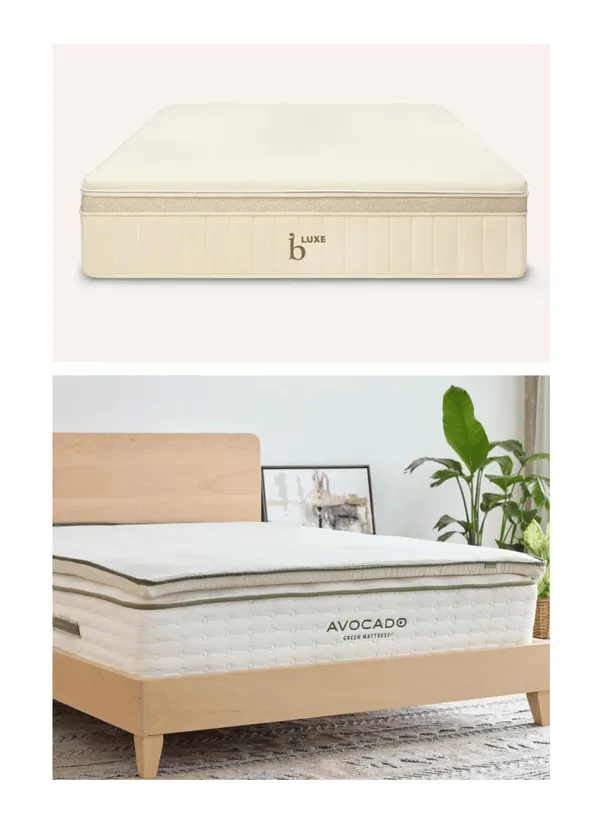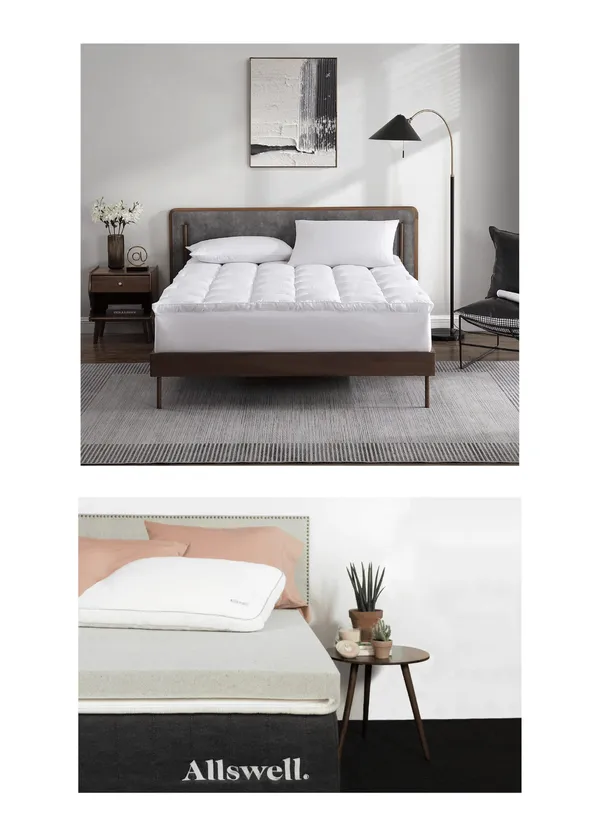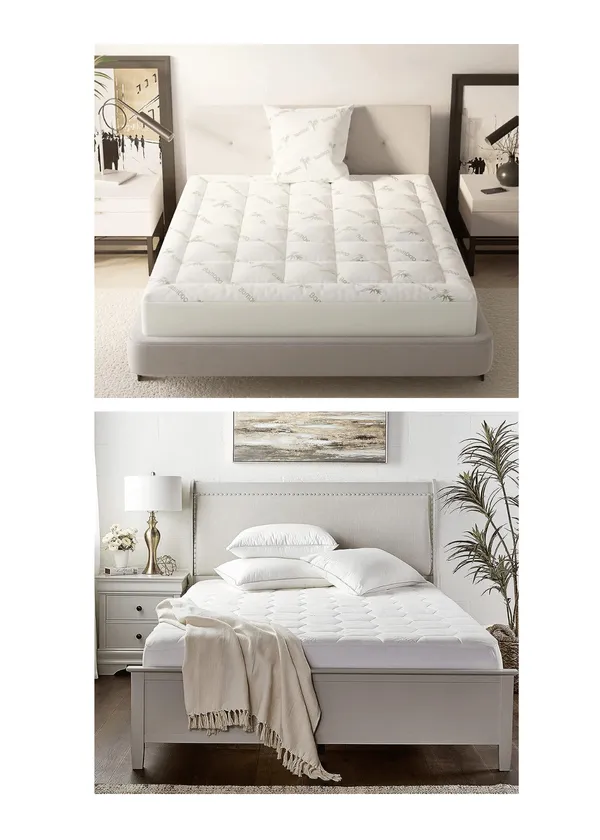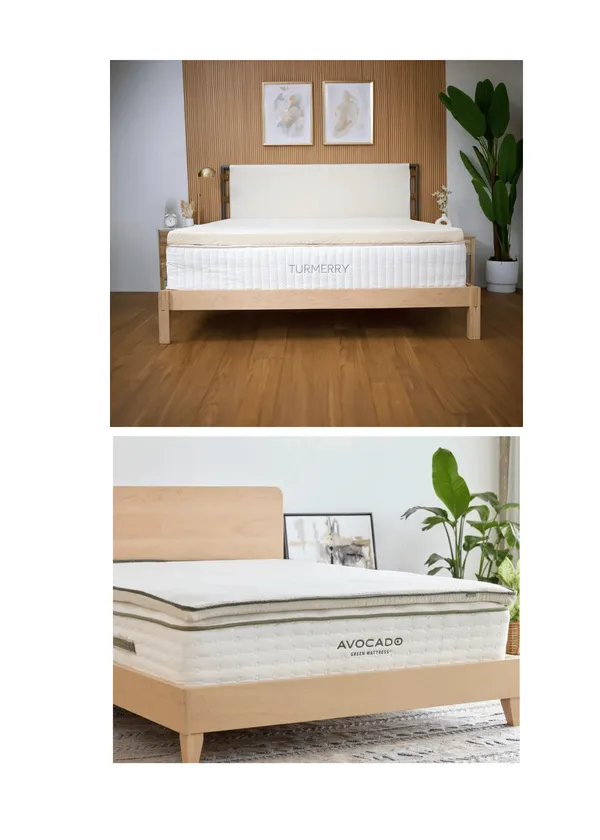(Last Update: 06/06/2024)
Have you ever woken up feeling more tired than when you went to sleep?
It might not be you; it could be your mattress. A mattress's lifespan plays a pivotal role in the quality of your sleep.
But how do you discern fact from fiction about how long mattresses genuinely last? Understanding the factors influencing mattress longevity can mean the difference between a decade of comfort and frequent, costly replacements.
I'd like you to please join me as we unveil the truth about mattress longevity, helping you make an informed decision about your next purchase.
Together, we'll explore what really matters so you can invest in a mattress that will last and keep you sleeping soundly.
The Basics of Mattress Lifespan

Purchasing a mattress is a significant investment, not just monetarily but also in terms of your health and well-being.
Understanding the basics of mattress longevity ensures you get the best value for your money and sleep. But how long does a mattress typically last before it needs replacing?
Factors Affecting Durability: The durability of a mattress is influenced by multiple factors:
- Durable Materials Used: High-quality materials tend to have a longer lifespan. For instance, natural latex beds usually outlast synthetic ones, while high-density memory foam retains its shape longer than its low-density counterpart.
- Usage: Even a new mattress used nightly by an adult will wear out faster than one used occasionally in a guest room. Similarly, a children's mattress might experience different wear due to its lighter body weight and playful nature.
- Weight Distribution: Heavier individuals or those who sleep in the same sleeping positions every night might notice depression or sagging sooner. Rotating or flipping certain types of beds can help even out wear.
- Care and Maintenance: Regular cleaning, using high-quality mattress protectors, and ensuring proper support can extend a mattress's life. Exposure to moisture or pests can significantly decrease its lifespan.
Average Lifespan: While the longevity of a mattress can vary based on the factors mentioned above, there are general guidelines for average lifespans:
Memory Foam Mattress:
- Lifespan: 7-10 years.
- Over time, a Memory Foam Mattress may lose its resilience, leading to sagging and reduced support.
- Regular rotation can help extend its usable life.
Innerspring Bed:
- Lifespan: 7-10 years.
- Springs in an innerspring mattress can lose their supportiveness over time.
- Padding might be compact, affecting comfort.
- Using a mattress topper can prolong its lifespan.
Latex Mattress:
- Lifespan: 8-12 years.
- Natural latex mattresses tend to outlast synthetic varieties in durability.
- Resilient to sagging and body impressions.
- Regular care and maintenance can enhance longevity.
Hybrid Mattress:
- Lifespan: 7-10 years.
- Combines innerspring and foam elements, leading to variable lifespans.
- Quality of components significantly affects durability.
- Regular care can extend its usable life.
- Ideal balance of support and comfort.
Types of Mattresses and Their Longevity

Many wonder how long a mattress retains its support and structure. Your mattress plays a pivotal role in ensuring a good night's sleep. As the bed industry has evolved, many new mattress types have flooded the market, each with advantages, disadvantages, and lifespans.
Here's a breakdown of the most popular new mattress types and their longevity:
1. Memory Foam Mattresses:
Originating from NASA's airplane seat technology, memory foam has swiftly become popular among sleep enthusiasts.
- Composition: These are primarily composed of viscoelastic polyurethane foam. The Memory Foam Mattress responds to body heat and pressure, conforming to the body's contours and offering excellent support and comfort.
- Longevity Factors: The density of the foam plays a significant role. High-density foams tend to retain their shape longer, resisting sagging and indentations. Conversely, low-density foams might wear out faster, losing their supportive capabilities.
- Average duration: A quality memory foam mattress lasts 7-10 years, maintained well. Over time, the foam might lose responsiveness, leading to uneven surfaces.
2. Innerspring Mattresses:
The classic choice for many households, an innerspring mattress uses coils to provide support.
- Composition: The core of these innerspring mattresses is made of metal springs, with layers of foam, fiber, or additional smaller coils on top for comfort.
- Longevity Factors: The number of coils, their arrangement, and the quality of the padding materials can influence durability. Continuous coils are considered more durable than Bonnell coils. Pillow-top versions might sag sooner due to the softer materials used on top.
- Average longevity: These beds last about 7-10 years. Over time, the springs can lose their tensile strength, leading to a less supportive sleep surface.
3. Latex Mattresses:
Celebrated for their natural origins and durability, latex mattresses cater to eco-conscious buyers.
- Composition: Made from the sap of rubber trees, these beds can be all-natural, synthetic, or a blend of both. The latex foam provides a buoyant and supportive surface.
- Longevity Factors: Organic latex mattress is known for their durability and resilience, often outlasting synthetic counterparts. The method of processing, Dunlop or Talalay, can also influence the new mattress's feel and longevity, with Dunlop being denser and more durable.
- Average Lifespan: A latex mattress can last 8-12 years with proper care, making it one of the longest-lasting options. Natural latex, in particular, resists indentations and sagging remarkably well.
4. Hybrid Mattresses:
Offering the best of both worlds, hybrid beds combine the support of coils with the comfort of foam or latex.
- Composition: These beds typically have a coil base topped with layers of memory foam, latex, or other materials. The idea is to provide the bounciness of innersprings with the contouring comfort of foams.
- Longevity Factors: A hybrid mattress's durability largely depends on its components' quality. High-quality foams or latex combined with premium coils will yield a longer-lasting product.
- However, since they combine various materials, one component may wear out before the others.
- Typical longevity: Hybrid beds generally last between 7-10 years. Their lifespan resembles the materials they mirror—like innerspring or memory foam. Regular rotations can help even out wear and extend their life.
How long a mattress lasts depends largely on its materials and usage. Choosing a new mattress type is a matter of personal preference, balanced with considerations about longevity.
Signs That Your Mattress Needs Replacement

While investing in a quality mattress can ensure many years of comfortable sleep, no mattress lasts forever.
Over time, various signs may begin to surface, indicating that it's time for a replacement. Recognizing these signs early can save you from extended discomfort and potential health issues.
1. Physical Deformities:
The most evident sign that your bed needs replacement is visible physical deformities.
Sagging: Over time, the mattress may begin to sag, especially in the areas where you sleep most frequently. This dip creates an uneven sleep surface, affecting the spine's alignment and potentially leading to back pain.
Lumps: A lumpy mattress means the internal components have shifted or deteriorated. These lumps can create pressure points, leading to discomfort or pain during sleep.
Broken or Protruding Springs: You might feel the springs poking through for an innerspring or hybrid mattress. This not only compromises comfort but can be a safety hazard.
2. Sleep Disturbances:
Your restfulness level can be a significant indicator of the mattress's state.
Tossing and Turning: If you frequently change positions to find a comfortable spot, the mattress's uneven surface or lost support could be causing discomfort.
Waking Up Tired or in Pain: A mattress's primary job is to support you for rejuvenating sleep. If you consistently wake up feeling more tired than when you slept or with stiffness and pain, it's a clear signal that the bed isn't performing its role effectively.
3. Allergies or Health Concerns:
An old mattress can be a breeding ground for allergens and other health hazards.
Dust Mites: Beds can accumulate dead skin cells over time, which attract dust mites. These microscopic pests can cause allergic reactions, manifesting as sneezing, itching, or respiratory issues.
Mold and Mildew: If your bed has been exposed to moisture, mold and mildew may grow. Breathing in mold spores can lead to allergies and other health issues, especially in individuals with respiratory conditions.
An old bed may emit unpleasant odors due to sweat, body oils, or spills seeping deep into its layers. Besides being unpleasant, these smells can trigger.
Your bed is a crucial component of your daily life. It influences your sleep and, by extension, your overall health.
A fresh, comfortable, supportive mattress guarantees comfort and is a proactive step towards better health. Knowing how long a mattress stays effective ensures a good night's sleep.
Maintenance Tips to Extend Mattress Life

A mattress is a significant investment, both in terms of finance and its impact on your health.
Like any investment, it requires care and maintenance to ensure it serves you optimally for as long as possible. Here are some key maintenance tips that can significantly extend the life of your mattress:
1. Proper Foundation Support:
The base beneath your mattress plays a critical role in your sleep position and determining its longevity.
- Box Spring or Platform: Ensure you’re using the correct foundation. For instance, while innerspring beds often require box springs to distribute weight evenly, a memory foam or a latex mattress might benefit more from a solid platform.
- Slats Distance: If using a slatted foundation, ensure the slats are close enough (typically not more than 3 inches apart) to prevent sagging and uneven wear on the mattress.
2. Regular Cleaning Practices:
Keeping your mattress clean isn't just about aesthetics; it's vital for longevity and health.
- Use a Mattress Protector: This barrier prevents spills, sweat, and other body fluids from penetrating deep into the bed, reducing the risk of mold, mildew, and odors. It also keeps allergens.
- Vacuum Regularly: Every couple of months, vacuum the mattress surface using the upholstery attachment. This removes dust, dead skin cells, and potential allergens.
- Spot Clean Spills: Accidents happen. When they do, clean them immediately. Blot the area (don't rub) with a damp cloth and a mild detergent.
3. Flipping and Rotating:
Regular adjustments can ensure even wear and extend the mattress’s life.
- Rotate Head-to-Toe: Every few months, rotate the mattress 180 degrees. This helps distribute wear evenly, especially if you tend to sleep in the same spot every night.
- Flip If Possible: While this is essential for a double-sided mattress, many modern mattresses are one-sided. Flipping yours every six months can prevent sagging and indentations if yours is double-sided. However, for a one-sided mattress, stick to rotating.
- Remember the Foundation: Rotating and flipping the box spring or foundation is also good practice.
Proactive care and regular mattress maintenance can reward you with additional years of comfortable sleep.
Ensuring the existing mattress has proper support, keeping it clean, and periodically adjusting its position are simple steps that can lead to long-term benefits for the bed and your sleep quality.
Cost vs. Lifespan: Getting Value for Money

In the vast world of mattresses, the age-old adage, "You get what you pay for," often rings true. However, balancing cost and expected lifespan is essential to get the best bang for your buck.
1. Price Ranges and Expected Durability:
Understanding the correlation between price and durability is the first step in making an informed decision.
A Budget Mattress ($200-$700): While exceptions exist, this range typically has a shorter lifespan, often lasting around 5-7 years. They might use lower-density foams or fewer coils, affecting durability.
A Mid-Range Mattress ($700-$1,500): These mattress balances quality and cost well. Proper care can last 7-10 years, providing comfort and adequate support.
A Luxury Mattress ($1,500 and up): Made with premium materials like high-density memory foam, organic latex, or hand-tufted designs, the mattress boasts longevity.
2. Brands with the Best Longevity:
While countless brands are on the market, certain ones have built a reputation for durability.
Brands like Tempur-Pedic, Saatva, and Simmons Beautyrest are renowned for crafting mattresses that consistently deliver longevity and enduring comfort. Their products, known for robust construction and quality materials, often surpass standard lifespans.
3. When It's Worth Investing More:
Spending more upfront can result in long-term savings.
Material Quality: High-density foams, natural latex, and pocketed coil systems generally have longer lifespans. Investing in a bed with these materials can ensure longer comfort and fewer replacements.
Health and Comfort: Investing in a suitable bed becomes paramount if you have specific health concerns like chronic back pain or allergies. The long-term health benefits and comfort can outweigh the initial cost.
Warranty and Trial Periods: Brands that offer extended warranties or generous trial periods often have confidence in their product's durability. Investing in such brands can provide peace of mind, knowing the company stands behind its product.
When your mattress reaches the end of its lifespan, choosing eco-friendly disposal methods is crucial. This responsible approach benefits the environment by reducing landfill waste and aids those in need through donations, promoting sustainability and community support.
1. Recycling Old Mattresses:
An environmentally conscious option, recycling prevents most mattresses from adding to landfill waste.
Materials Breakdown: The mattress is comprised of several recyclable materials. For instance, the steel from innerspring coils can be melted down and reused. Similarly, foams can be processed into carpet underlay, and wood frames can be repurposed or converted into mulch.
Specialized Facilities: Many cities have dedicated mattress recycling centers. By dropping off your old mattress at such a facility, you ensure its components are responsibly and efficiently repurposed.
2. Donation and Repurposing:
One person's trash can be another's treasure.
Charities and Shelters: If your bed is still in reasonably good condition, consider donating it. Many charities and homeless shelters welcome such donations, offering a second life to your old mattress and providing comfort to those in need.
Upcycling: With some creativity, parts of an old mattress can be repurposed into various household items, from garden kneeling pads made from foam to metal spring wine racks.
3. Landfill Considerations:
If the above options are not feasible, it's essential to understand the implications of sending a mattress to a landfill.
Space Consumption: The mattress is bulky, occupying significant landfill space. They can also take decades to decompose fully.
Potential Contaminants: Over time, the chemicals and metals within the mattress can leach into the ground, potentially contaminating water sources.
Disposing of an old mattress is an opportunity to positively impact the environment. Eco-friendly methods like recycling transform materials into reusable resources, helping reduce landfill waste.
Donating extends the life of the mattress, aiding those in need while promoting sustainability. Repurposing it into new items fosters creativity and reduces waste.
These environmentally conscious choices significantly contribute to a greener future, showcasing our commitment to responsible waste management and sustainable living practices.
Conclusion: Making a Smart Mattress Investment
So, how long does a mattress last? It all depends on the mattress owner. Navigating the world of mattresses can seem daunting, but armed with the knowledge of lifespan, durability, and value, you're set to make an informed decision.
Remember, a mattress isn't just about immediate comfort—it's a long-term investment in your wellness.
To maximize your purchase's value, I recommend understanding the correlation between cost and lifespan, practicing regular maintenance, and ensuring eco-friendly disposal.
For all buyers, let the price and the promise of restful nights for years guide your quest for a comfortable and supportive mattress
. Together, we can find the perfect mattress that meets your needs and ensures many nights of sound sleep.
Frequently Asked Questions
Can a mattress last 20 years?
While some high-quality mattresses, especially latex or handmade varieties, claim to last up to 20 years, it's rare. Most mattresses have a lifespan of 7-15 years. Even if a mattress doesn't physically deteriorate, its support and comfort can wane over extended periods. Regular maintenance can extend longevity.
How do you know if your mattress is worn out?
Signs that your mattress is worn out include visible sagging, lumps, or protruding springs. Increased discomfort, waking up with pains, or heightened allergies can also indicate wear. Additional wear indicators include a noticeable decline in sleep quality or a mattress over 7-10 years old.
How often should you change a mattress?
Typically, a mattress should be changed every 7-10 years. However, the length should a mattress' lifespan varies based on the mattress type, quality, and usage. It's essential to monitor for signs of wear, such as sagging or discomfort, and adjust replacement timelines accordingly. Regular maintenance can prolong its life.
What is the average lifespan of a mattress?
The average life expectancy of a mattress ranges from 7 to 10 years, depending on its type, quality, and usage. While innerspring and memory foam mattresses may wear out faster, high-quality latex mattresses can exceed this range. Regular maintenance and proper care can enhance a mattress's longevity.

